
NEW WAYS OF THINKING: ADVANTAGES FOR PRE-RETIREES
HOW TO MANAGE YOUR CPA PRACTICE LIKE A BOSS USING POWER BI DASHBOARDS



NEW WAYS OF THINKING: ADVANTAGES FOR PRE-RETIREES
HOW TO MANAGE YOUR CPA PRACTICE LIKE A BOSS USING POWER BI DASHBOARDS

CAMICO knows CPAs, because we are CPAs.

Created by CPAs, for CPAs, CAMICO’s guiding principle since 1986 has been to protect our policyholders through thick and thin. We are the program of choice for more than 8,000 accounting firms nationwide. Why?

CAMICO’s Professional Liability Insurance policy addresses the scope of services that CPAs provide.

Includes unlimited, no-cost access to specialists and risk management resources to help address the concerns and issues that you face as a CPA.

Provides potential claim counseling and expert claim assistance from internal specialists who will help you navigate the situation with tact, knowledge and expertise.
Does your insurance program go the extra mile? Contact us to learn more.
Irene M. Walton
Area VP, Affinity Manager
T: 215.351.4765
E: irene_walton@ajg.com
Lauren Pitonyak Account Executive
T: 215.351.4701
E: lauren_pitonyak@ajg.com


AIYSHA (AJ) JOHNSON, MA, IOM Chief Executive Officer & Executive Director ajohnson@njcpa.org
THERESA HINTON Chief Operating Officer thinton@njcpa.org
DON MEYER, CAE Chief Marketing Officer dmeyer@njcpa.org
RACHAEL BELL, CAE Managing Editor rbell@njcpa.org
KATHLEEN HOFFELDER, MA Senior Content Editor khoffelder@njcpa.org
DIANE ESPIRITU Senior Designer despiritu@njcpa.org
Far more meaningful than simply data alone is one’s story. Accounting and finance professionals are accustomed to making sense of mounds of data but, oftentimes, the true messages that hit home to land a particular client or customer are the stories behind the data.
Given the state of the economy, long-term interest rates and government borrowing levels, professionals who are getting ready for retirement have much to consider. One option to think about is part-time work, which offers benefits such as maintaining health benefits and postponing the collection of Social Security.
Learning to use data to reduce risk and make smart decisions is a game changer for CPA firms. Power BI dashboards can be used for day-to-day operations, staffing management and long-term strategic decisions.
EISENHOWER PARKWAY
300, ROSELAND
njcpa.org/advertising or contact Eileen Proven at eproven@njcpa.org or 862-702-5640
The New Jersey Society of CPAs welcomes June M. Toth, CPA, CFF, CITP, CGMA, principal at WilkinGuttenplan P.C., as its 2024/2025 president on June 1, replacing outgoing president Edward G. O’Connell, CPA, CGMA, CFF, CFE, a partner at Withum.
To know June is to understand that she makes her presence known — in the boardroom, when providing expert testimony, with NJ-CPA-PAC trustees and in the classroom. Part of that is attributed to having a father from New Jersey and a strict mother from the Shenandoah Valley. What sets June apart is her non-traditional path to principal at WilkinGuttenplan, P.C. “Typically, you may begin your career with a large firm and then maybe join or create a small firm. I’ve done the polar opposite. I was not looking for this opportunity; it was presented to me and was not taken lightly,” said June, a co-founder and managing member of zbt Certified Public Accounting & Consulting for more than 30 years.
She was approached by Ed Guttenplan, CPA, MBA, CGMA, co-founder of WilkinGuttenplan, initially due to the onset of a retiring quality control partner. While her primary focus at WilkinGuttenplan is quality control, she is actively engaged in many parts of the practice, including non-attest and assurance services. “I continue to do quite a bit of what I was doing before, such as originating clients,” she added,
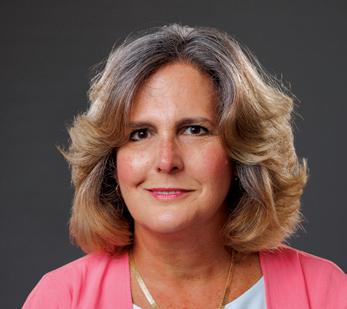
noting that culture was important. “When I sat down with the partners, the firm culture is what really attracted me.”
At the time of her hiring, June had already made tremendous strides in all facets of her life — both personally and professionally. When her husband, Ed, who was a union pipefitter, hurt his back on the job and their son, also named Ed, was just six years old, she went from working part-time to supporting the family. “We had to swap roles, and I had to become the primary financial provider. I learned how to build relationships to create strategic networks. I had to develop my practice and became responsible for the household,” she said. “Being in a small firm, I had a lot of diversity in practice. I was exposed to a variety of practice areas, which gave me a well-rounded background.”
Given June’s determined nature, she was well-prepared for her leadership role at
New Jersey CPA (ISSN 1534-6692) is published quarterly by the New Jersey Society of Certified Public Accountants, 105 Eisenhower Parkway, Suite 300, Roseland, NJ 07068. Issue No. 99 Copyright © 2024 New Jersey Society of Certified Public Accountants. Annual membership dues include $9 for a one-year subscription to New Jersey CPA magazine. Members may not deduct the subscription price from dues. Periodicals postage paid at Roseland, NJ, and at additional mailing office.
POSTMASTER: Send address changes to New Jersey CPA, 105 Eisenhower Parkway, Suite 300, Roseland, NJ 07068-1640.
The materials and information contained within New Jersey CPA are offered as information only and not as practice, financial, accounting, legal or other professional advice. The opinions expressed herein are those of the authors and not necessarily those of the New Jersey Society of CPAs. Publication of an advertisement in New Jersey CPA does not constitute an endorsement of the product or service by the New Jersey Society of CPAs.
the NJCPA. As president, she intends to focus on widening the career pathway for aspiring young professionals. “If you want to be an entrepreneur, work your way up the ladder in a CPA firm, or be in private industry. Having the CPA license can open doors and help you to be more successful,” she said. The president of Roots & Wings, a nonprofit for aged-out foster youth in Denville, June will also work towards breaking down barriers to entry into the profession. “There’s a pressing need for greater diversity and inclusion in the CPA profession, reflecting the rich tapestry of the communities they serve,” she added.
According to June, who believes heavily in “paying it forward” and is a member of the Accounting Advisory Board of her alma mater, Rutgers Business School, mentoring is a responsibility. “I mentor students at Rutgers, which has a mentoring program for students and those focused on getting to the finish line to pursue their CPA license.”
She also teaches CPE courses at the NJCPA and is actively engaged in the Accounting & Auditing Standards Interest Group. “I got involved in the Society at the suggestion of Jim Hardenberg [NJCPA Chief Learning Officer]. I credit him with helping me to develop professionally and where I am today.” she said. “Once I started connecting with those in the interest groups, I saw my technical abilities develop. We would collaborate outside of the interest group. More importantly, I developed many relationships there. And those relationships became friendships as well as strategic business relationships,” she added.
When June is not physically building relationships in New Jersey, she and her husband can be found in their pickup trucks with their three golden retrievers heading to their RV on the Eastern Shore of Virginia, or to fish on their boat in Cape Charles. There, June catches up with friends and family and openly admits to “getting her hillbilly on.”
Learn more about June at njcpa.org/ about/board

 JOHN D. MACONES RESOLUTION ECONOMICS LLC
JOHN D. MACONES RESOLUTION ECONOMICS LLC

“A story is different. It does not expend itself. It preserves and concentrates its strength and is capable of releasing it even after a long time.”
Walter Benjamin, author of The Storyteller, from a 1973 collection of essays.
Walter Benjamin’s quote highlights something special: the often-unrecognized power of a story. Offering up financial information in the form of a story can be beneficial when trying to communicate data in a way that your audience can easily understand and remember.
To help understand the power of a good story, think back to the last time you found yourself completely lost in the silver screen or between the pages of your favorite novel. Out of all the tens, hundreds or even thousands of movies or books you have watched or read, why is this one so special or memorable?
For example, think about the movie, “A Few Good Men.” Many people can recall a great deal of the climactic conversation between Colonel Jessup (played by Jack Nicholson) and his rival, Lieutenant Daniel Kaffee (played by Tom Cruise). In the scene, Jessup is being cajoled by Kaffee, who is demanding an answer to an overly sensitive question regarding who called the “Code Red.” Eventually, Jessup provides a passionate response to the questions being asked by Kaffee, though he did not fully recognize the weight and implications of his answer. When we think back to this movie, particularly this scene, what was it that we appreciated? Was it the competition between the witness and lawyer, the personal courage of Kaffee, who put his entire career on the line by asking such a controversial question, or was it the odd sense of duty displayed by Jessup?
What we have come to know about the scene is that, although we resonate with the general subject matter, there is also something biological happening. On the molecular level, when in the presence of an excellent film or story, the brain is activated in a myriad of ways. First, a neurochemical compound named oxytocin is being synthesized in the hypothalamus. Second, the pituitary gland sends orders throughout your nervous system for cortisol production in the adrenal glands just above your kidneys. Third, neurons throughout your brain are firing in every direction, stimulating your senses and attention. For generations, these natural subconscious brain reactions have been utilized to motivate people to engage in behaviors such as reciprocity, empathy, volunteering, inspiration, goodwill or charity. Studies have shown that it is the brain’s chemical reactions to enjoyable stories that trigger not only the prosocial traits previously mentioned but also establish a wonderful sense of information recall as it relates to the underlying message of the story.
For many accounting professionals, the struggle lies in communicating complex financial information or solutions in a way that colleagues or clients can easily understand. So, how can accountants and CPAs use the power of storytelling?
The simplest and most effective method to employ the art of storytelling is the STAR Technique: Situation, Task, Action, Result.


y Situation: Explain to your audience any relevant background information as it relates to the context of the work you’ve performed. This sets the stage for your story and can be utilized to draw importance or justification to the work you are about to present.
y Task: Next, explain your mission. Use this opportunity to bridge the relevant background information to what you set out to accomplish or address.
y Action: This is often the longest part of your story and where you can make your mark. The goal is to explain to your audience — in the appropriate level of detail — your journey from start to finish. The level of detail should be tailored to your ability to communicate complex ideas or methodologies in a manner that that aligns with the acumen of your audience. If you provide numbers, don’t just tell your audience, show them the underlying story. Act as a translator and break the information into bite-size pieces.
y Result: Finally, tie it all together. Summarize how the information you presented relates to the needs of the audience and the context of their situation. Tell them what you accomplished and provide them with actionable conclusions or recommendations.
Imagine a scenario where you’re an expert financial consultant who has been retained to testify before a jury on the value of a family-owned and operated soda manufacturing company (“Pop Co.”) in light of a secret recipe that has been wrongfully leaked to its competitors. You’re presenting your conclusion of value in the STAR format.
y Situation: You explain to the jury why you were approached by your client and how you were retained to value their company. You tell them the background of Pop Co. and how, generations ago, a family member crafted a secret formula that would one day be used to build a nationally recognized brand. You further explain the nature of the valuation as it relates to the leakage of the secret recipe and your client’s need for financial reparations.
y Task: You explain to the jury your mission to utilize the financial data of the business to construct a valuation model to ultimately create financial clarity as to the value of Pop Co.
y Action: You explain that you concluded your valuation by ultimately relying on the income approach to determine a $55 million value of Pop Co. Instead of simply showing the financial numbers related to the calculation model that generated the $55 million valuation,
you apply your creative framework. You convey and tell the story of a business that came from humble beginnings, serving a small community in New York. You then recognize, in your financial analysis of decades of statements, how this once-local business flourished through their increase in capital expenditures to build state-of-the-art facilities and gained loyal, hardworking employees through generous salaries to grow to operations and distributions in all 50 states. You convey that you tracked market share in the U.S. beverage market and relate that to cycles shown in the business’ cashflows. You ultimately take the numbers off the page and give them life through the relatable context supporting your $55 million valuation.
y Result: In your conclusion, you remind the jury of the quintessential role this secret recipe played in building Pop Co. and the financial devastation in the wake of its leakage from the business. You leave the jury with your credentials and qualifications that further solidify your insights and conclusions, which leaves a lasting impression from a qualified expert.
What this framework conceptualizes is the power of a story — the power to affect tangible results with a narrative. By employing this simple framework, you will not only be remarkable as an expert in your field, but you will be easily understood and remembered for your exceptional ability to connect and convey your complex work product in a creative way that resonates with clients and other professionals.
Chris W. Young, Ph.D., MBA, MAFF, CVA, is a partner at Resolution Economics LLC, a team of economists, statisticians, data scientists and financial analysts. He can be reached at cyoung@resecon.com. John D. (JD) Macones is a consultant at Resolution Economics LLC and can be reached at jmacones@ resecon.com.
LEARN MORE
June 11-14, Atlantic City
NJCPA CONVENTION & EXPO — YOUR STORY, YOUR SUCCESS njcpa.org/convention
TEPP WEALTH MANAGEMENT

While the economy appears strong, there are significant structural issues bubbling under the surface.
Geopolitical, economic and demographic trends indicate that the U.S. will likely encounter some combination of higher taxes, higher inflation and higher interest rates perhaps for the next few decades. Given these conditions, pre-retirees may need to reconsider the age and manner in which they leave the workforce.
Consider the abundance of factors:
y National debt. Currently, the U.S. national debt is a mind-blowing $34 trillion and growing. Interest payments now approximate the amount paid for Social Security and will soon exceed expenditures for national defense. Higher taxes will likely be needed to meet surging budgetary demands.
y Pension and health care. Due to demographics and income distribution, the demand for social services — including health care, education and Social Security — is straining our government budget. As populations age and health-care costs escalate, further tax hikes may be warranted.
y Defense. Recent geopolitical events have demonstrated why the U.S. must maintain its global military supremacy. Nations such as China, Russia, Iran and North Korea are intent on repudiating the global foreign exchange and free-trade
system established under U.S. leadership. Protecting international trade, preserving infrastructure, partnering with allies and preventing terrorism requires tremendous expense, likely much more than is allocated today.
y Restrictive trade policies. For decades, the global economy benefitted from the implementation of global free-trade agreements. Unfortunately, the more affluent often derived the greatest rewards from globalization. The middle and lower classes often suffered as manufacturing jobs were shifted abroad. As a result, we are now seeing the rise of political populism and isolationism. This is driving organized labor and concepts such as friendshoring which restricts free trade. This policy reversion will have a long-term inflationary effect.
y Demographics. Global demographic trends are downright disturbing. Virtually all major economies are contending with rapidly aging populations and a decreasing supply of labor. With fewer people actively participating in the workforce, there is less capacity to meet the demand for goods and services, potentially leading to supply shortages and price increases.
y Supply chain disruptions. Interconnected supply chains have heightened vulnerabilities to disruptions, as evidenced by recent events such as the COVID-19 pandemic and the military conflicts in Ukraine and the Middle East. These disruptions can lead to shortages, bottlenecks and rising production costs, all of which contribute to inflation.
y Normalization of monetary policy. After years of extraordinarily accommodative monetary policy measures, central banks are gradually shifting toward higher interest rates to counter inflation concerns and risks to financial stability. During the last few months in particular, the Federal Reserve has urged investors to remain patient and anticipate interest rates that Fed Chair Jerome Powell says will be “higher for longer.”
y Government borrowing costs. Rising government debt levels and fiscal deficits may prompt investors to demand higher yields on government bonds to compensate for increased credit risk. Further debt downgrades by rating agencies will only exacerbate this problem. As a result, governments may face higher borrowing costs, which could translate into higher interest rates.
y Capital flight and exchange rate pressures. In an environment of rising interest rates, investors may seek higher returns by reallocating capital to countries with more attractive yields. This capital flight can exert downward pressure on domestic currency values, prompting central banks to raise interest rates to defend exchange rates, further contributing to higher borrowing costs.
Higher taxes, increased inflation and rising interest rates present a clear economic threat; however, this economic adversity may yield opportunity for pre-retirees. The traditional path toward retirement suggests that retirees simply stop working at a given age. However, the U.S. economic juggernaut and the perpetual demand for skilled labor means that pre-retirees should consider working on a part-time, flexible basis.
Even with inflated immigration, there is a substantial shortage of workers in the U.S. According to the Federal Reserve Bank, our current LFP (Labor Force Participation) rate is 62.5% which is the lowest in generations. Moreover, this problem is anticipated to worsen in the coming years. Population replacement depends on a fertility rate of 2.1; the U.S. birth rate is currently 1.84. By comparison, according to cia.gov, the U.K.’s rate is 1.63, Germany’s is 1.58 and China’s is 1.45. This data suggests that as the U.S. economy continues to expand, there may not be a sufficient supply of qualified, skilled labor. Technological development and productivity can bridge some of the gap, but it will take years — perhaps decades — for the benefit to fully materialize. Pre-retirees are ideally suited to fulfill this need.
Professionals working part time in their 60s can derive several advantages:
y Maintain health benefits. If workers qualify for employer-provided benefits, they can sustain healthcare coverage and continue saving for retirement. In addition, many employers also provide inexpensive life insurance and long-term disability insurance options.
y Reduce taxes. Earning income from part-time work allows retirees to implement tax-planning strategies to manage their tax burden, including the following:
• Contributing to retirement plans. Contributions to tax-advantaged retirement accounts such as IRAs and 401(k) plans provide compounded tax-deferred earnings and can reduce taxable income.
• Postponing collection of Social Security. By earning additional income, clients retain the option of postponing the collection of Social Security. Doing so further enables retirees to increase the amount ultimately received each year once they file their claim.
• Leveraging new Secure Act laws for later RMDs. Since retirees are now permitted to postpone their required minimum distributions (RMDs) into their early 70s, this allows for better coordination from retirement accounts and taxable investments to minimize tax consequences. This can help manage tax liabilities and preserve portfolio growth potential.
y Hedge against inflation. Unlike fixed-income investments, part-time wages have the potential to keep pace with rising prices, helping retirees maintain their purchasing power over time.
y Save for longevity. As the quality of health care continues to improve, many clients will ultimately live longer than they might expect. The extra earnings generated during pre-retirement, along with the aforementioned advantages, can provide a substantial boost to long-term savings.
y Boost mental health. By staying active and engaged, retirees can ward off feelings of isolation, depression and cognitive decline, leading to a more fulfilling and satisfying retirement experience. Keeping the mind stimulated and the body active promotes a positive outlook on life and contributes to overall mental and emotional resilience during the later years.
Rapid improvements in technology, swirling economic conditions and a variety of geopolitical threats pervade the landscape. The longer people live, the greater the risk with which they must contend; it therefore becomes prudent to maximize flexibility when evaluating long-term decisions. Rather than planning for retirement with a permanent mindset, clients would be well-advised to consider a more gradual approach that sustains assets but still permits time to enjoy their later years.
David Tepp, CPA, PFS, MBA, is the managing member of Tepp Wealth Management. He is a member of the NJCPA and can be reached at dtepp@teppwealth.com
Tepp Wealth Management is a registered investment adviser. Information presented is for educational purposes only and does not intend to make an offer or solicitation for the sale or purchase of any specific securities, investments, or investment strategies. Investments involve risk and, unless otherwise stated, are not guaranteed. Be sure to first consult with a qualified financial adviser and/or tax professional before implementing any strategy discussed herein. Past performance is not indicative of future performance.
READ MORE
FINANCIAL PLANNING KNOWLEDGE HUB njcpa.org/hub/ financialplanning
LEARN MORE
June 25, Live Webinar MAXIMIZING YOUR SOCIAL SECURITY BENEFITS
June 25, Live Webinar SECURING A COMFORTABLE RETIREMENT njcpa.org/events

 RYAN WARNET, CPA, MSA FOURZERONINE SOLUTIONS, INC.
RYAN WARNET, CPA, MSA FOURZERONINE SOLUTIONS, INC.

Running a CPA firm is challenging, overwhelming, gratifying, frustrating, amazing — we can go on and on. Anyone who says that running a firm isn’t a balancing act that both rewards and tests you either isn’t telling the truth or isn’t giving it their all. So, how do you stack the odds in your favor?
In the last three years, we’ve run our firm with the help of real-time dashboards, prepared by our data analytics company, FourZeroNine Solutions, using Power BI. We use CCH Axcess and leverage Power BI to generate meaningful, clear and user-friendly dashboards. If any company is flush with data, it’s a CPA firm; learning to use that data to reduce risk and make smart decisions is a game changer.
It’s important to have a view into the workings of the business. For example, our Partner Dashboard has 13 different pages, including the following:
y Billings. The Billings Dashboard drives strategic decision making by enabling year-over-year comparisons to assess client performance and highlight opportunities for increased billings. It helps manage risks by tracking real-time trends and identifying concentration risks. The dashboard’s flexibility for highlevel or detailed analysis with the use of various slicers and filters allows for proactive management to ensure that the firm remains on course. It calculates the average billable rate and compares write ups and write downs across three years.
y AR aging. This may sound like a standard report, but our AR Aging Dashboard allows us to filter by partner to sort amounts. The automated data refreshes, and with ease of accessibility, our partners can check on real-time outstanding payments within seconds.
A firm’s greatest asset is its team. It’s helpful to use dashboards related to capacity, hours worked and service codes to make the best decisions for your team. For example:
y Staff budget versus actual. This tool is designed to optimize project and staff management. We look to align projected billable hours for each staff member with project budget hours assigned to them and then compare actual hours worked. By analyzing capacity percentages, partners can make informed decisions about shifting workloads or strategically hiring to meet demand. It also helps to enhance overall firm productivity and client service by making sure work is completed on time and no staff member is overworked.
y Client/staff. This dashboard shows all of the clients worked on by the selected staff and illustrates monthly billable hours. We use this report to determine who will be most impacted by a client leaving, what work needs to be reassigned in the event a client leaves and which clients will be impacted if a team member leaves.
y Non-billable detail. Diving into detail of non-billable time aids in uncovering inefficiencies within workflows, which can free up time for billable work. The ultimate goal of this report is to identify and streamline processes, enhance productivity and increase
profitability. By analyzing non-billable time, we gain greater visibility into the day-to-day operations that do not generate revenue.
Leveraging data enables firm leaders to influence strategy and stay ahead of the curve in planning, evolving, growing and innovating. Some of the dashboards we use include the following:
y Client groupings. We stratified and grouped our clients by annual billing range (e.g., over $75,---; $55,----$75,---), which allows us to review each revenue grouping by total invoices amount, percent of total invoiced amount, average price for the group, total hours worked on the group and percent of total hours. We use this dashboard to make decisions on raising our fees and rates and to make sure we have the right mix of team members to handle the mix of client sizes.
y Client ranking. We rank our clients in categories A through D based on a set of criteria we developed internally, and the dashboard allows us to review billings and write-ups/downs by ranked category. We can filter by partner and date and expand each ranked category to see which clients are in each. We use this dashboard to analyze potential lost billings if an entire ranking was to be purged and to determine if we are hitting our long-term goals by working exclusively with A- and B-level clients.
y Employee profitability/client profitability. These dashboards show profitability by client or team member with filters by partner and drill downs that allow for all the detail to be reviewed. We can drill into the employees who worked on the client or into the clients worked on by one

employee. It provides billable percentage and write ups/downs. We use these dashboards to discover which clients may need to have their fees raised, where there’s scope creep and which team members may need more training. This allows us to analyze why certain people and clients are most profitable.
It’s important to have access to this platform across all devices, including phones, and to pull up real-time data at your fingertips whenever needed. This helps save time, eliminate guess work and make better decisions.
A logical next step is to journey into process automation. At SKC, we developed a list of reports, tasks and actions that were previously manual and repetitive. FourZeroNine is delivering solutions for all of them, saving us time, energy and resources. We automated our quarterly commissions report, weekly team flash report and monthly billings report.
Be on the lookout, across all departments, to automate redundant, timeconsuming and manual processes with the help of data analytics. For example, looking ahead, we will be redesigning our marketing dashboard, creating a hiring predictor and automating our proposal and new client set-up processes.
As new challenges come up or areas of a practice become a focal point, it’s important to have the data and the evidence to make the right decisions. The ideas are endless, so having a data analyst team working with you on a regular basis is vital.
See examples of FourZeroNine’s Dashboards in the online version of the article at njcpa.org/newjerseycpa.
Sarah Krom, CPA, MST, is the managing partner at SKC and Co. CPAs L.L.C. and a past president of the NJCPA. She can be reached at skrom@ skcandco.com. Ryan Warnet, CPA, MSA, is president at FourZeroNine Solutions, Inc. He is a member of the NJCPA and can be reached at rwarnet@ fourzeronine.com.
DATA ANALYTICS KNOWLEDGE HUB njcpa.org/hub/data
DO MORE VISIT THE FOURZERONINE BOOTH (#104) AT THE 2024 NJCPA CONVENTION & EXPO njcpa.org/marketplace

The NJCPA is aiming to help firms and businesses find more accounting talent in 2024 and beyond, as demand for young people to succeed retiring accountants continues to grow.
The ongoing talent shortage — known as the “pipeline problem” — has created a crisis in the profession in which talent is in high demand but fewer people are studying to be accountants and even fewer are becoming CPAs. A host of factors are contributing to the pipeline problem, like the challenging CPA Exam, comparatively low starting salaries and concerns about work-life balance, to name a few.
In summer 2023, the NJCPA formed the Pipeline Task Force, headed by Zack Cohen, CPA, senior manager at CFGI and chair of our Emerging Leaders Council. The group, which included a diverse set of members, developed a set of actionable and measurable recommendations that identified areas that need improvement; practices and programs that the NJCPA should launch, continue or ramp up; where to direct resources; and where further research is needed. Three areas of focus were identified:
y Raising awareness of the profession among high school students and addressing negative perceptions among college students and recent grads.
y Removing obstacles to licensure and improving access to resources.
y Engaging with and getting buy in from key professionals at firms, companies and in academia.
To raise awareness of the profession among high school students, the task force recommended conducting year-round outreach to high schools and educators, connecting firms and companies with high schools in their areas and promoting positive accounting stories through social media, blogs and podcasts. Members agreed that CPAs need to tell more success stories and fewer war stories.
The task force also said that the intersection of the NJCPA’s pipeline and advocacy efforts can support the development of more accounting classes in high schools and make headway toward getting accounting recognized as a science, technology, engineering and math — or STEM — program.
Among the obstacles to licensure discussed by the task force was the 150-hour education requirement. Some believed that the additional year of education and costs associated with it are a significant barrier to potential accounting students and those who may sit for the CPA Exam.
The NJCPA has joined the national conversation about the 150-hour requirement and is monitoring efforts around the country to create additional pathways to licensure for CPA candidates. A bill backed by the Minnesota Society of CPAs that would ease the path to a CPA license is moving forward. The bill would maintain the current 150-credit-hour rule but would offer an additional option to licensure with a bachelor’s degree (120 credits) and two years of work experience.
Additionally, the NASBA Professional Licensure Task Force is studying a structured experiential learning program that would provide for education, documented experience and other elements that would offer an equivalent path to licensure without needing a fifth year to complete a 150-hour education program. This additional path, to be defined in greater detail, would include an education and experience component to measure a participant’s competency to be licensed as a CPA and would be considered equivalent to the current 150-hour pathway defined in the Uniform Accountancy Act.
Research shows that we have much more work to do around awareness and perceptions of an accounting career. The pipeline problem will not be solved this year or next. The NJCPA, as well the other state CPA societies and the AICPA, are developing multiyear, collaborative, data-driven campaigns that will address the continuing accounting pipeline challenges.
CPA PIPELINE KNOWLEDGE HUB njcpa.org/pipeline
LEARN MORE
June 11-14, Atlantic City
NJCPA CONVENTION & EXPO njcpa.org/convention
Paychex surveyed human resources (HR) professionals and employees on their views of technology, its effectiveness and the challenges it poses. The study reveals current sentiments about artificial intelligence (AI) in HR, the tasks it is reshaping and the delicate balance needed between humans and machines to manage people.
From recruitment to benefits administration, HR professionals are using technology to enhance efficiency across various HR functions.
Adopting AI is a common focus among many business leaders in 2024. More than half (56%) of the HR professionals surveyed already use AI in their operations, and 85% find it effective for HR analytics. However, there is a divided stance on trust: 40% trust AI to make fair HR decisions, 28% distrust it and 32% are neutral.
Just over a quarter of those surveyed (27%) say HR AI improves efficiency in their HR department, saving an average of 7.5 hours a week. More than half (56%) of respondents say technology speeds up employee recruitment and screening, while 41% say it speeds up employee training. They say using technology in tasks related to screening and hiring new job candidates is useful and crucial to business success in a tight labor market.
In today’s tight labor market, businesses are increasingly turning to technology to streamline talent acquisition and onboarding processes.
Nearly a quarter of HR professionals surveyed anticipate AI will become integral to HR functions in the next five years, while 58% believe it will result in transforming analytics and data management, 46% say it will help in talent acquisition, and 43% believe it will assist employee onboarding and offboarding.
As HR departments incorporate AI into their operations, only 11% of employees surveyed say the process is very transparent. Most are either neutral (30%) or somewhat unclear (25%) about its transparency. Employers can enhance this communication by clearly explaining AI’s role, its benefits and how it impacts employees’ day-to-day work.
The balance of human and technology input is also a point of debate, with 41% of survey participants preferring less AI involvement in HR-related decision-making. There’s strong agreement among surveyed employees that conflict resolution and addressing sensitive professional matters should stay under human direction.
Data privacy showed up as a significant concern, with 68% wary of the data risks AI poses to HR processes. Companies can ensure employee data safety by implementing robust security protocols, regularly auditing AI systems for compliance, and transparently communicating these measures to build trust and reassure employees.
y Implement policies to safeguard AI practices and ensure data is safe.
y Ensure tools have been validated for compliance with new laws addressing the use of AI in HR.
y Read up on AI to understand how tools may change, and work with legal counsel and trusted vendors to conduct AI audits on your data.
y Discover HR analytics tools and learn how they may better support consultation with clients and your organization.
y Don’t lose sight of the human aspect of HR and ensure there is a human element involved in all decisions with AI.
y 85% of HR leaders say AI provides useful HR data and analytics.
y 41% of employees prefer less AI involvement in HR decisions, despite 56% of HR pros already using AI in their practice.
y Employees feel conflict resolution (78%) and disciplinary actions (76%) should be led by humans.
HR professionals are cautiously optimistic that AI in HR can work. The time saved, the biases potentially reduced and the significant reshaping of recruitment and onboarding all point to an AI-driven future. Balancing tech-fueled efficiency improvements with a human touch will be crucial. Employers must ensure AI augments rather than replaces the human element that’s so vital to the spirit of human resources.
Access the full article and survey methodology at go.paychex.com/njcpa_jun24.
Julie Caplan is the marketing content program manager at Paychex. She can be reached at jcaplan@paychex.com
Paycheck is an NJCPA member benefit provider. Learn more at paychex.com/ accounting-professionals

In the complex landscape of retirement planning, Social Security remains a cornerstone for most Americans. CPAs can play a pivotal role in guiding clients through the maze of Social Security benefits, ensuring they maximize their entitlements while complementing their broader financial strategy. Here are eight areas to consider.
1. Understand the basics. Social Security benefits are funded through payroll taxes under the Federal Insurance Contributions Act (FICA). Benefits include retirement, disability, survivorship and dependents’ benefits, offering a financial safety net to workers and their families. For retirement benefits, the eligibility age ranges from 62 to 70, with full retirement age (FRA) depending on the birth year.
2. Know the significance of timing. One of the most critical decisions in Social Security planning is deciding when to claim benefits. Claiming before the FRA results in permanently reduced benefits, while delaying claims beyond the FRA can increase benefits by up to 8% per year until age 70. CPAs should assess clients’ financial situations, health status and life expectancy to provide tailored advice on the optimal time to start receiving benefits.
3. Be aware of spousal and survivor benefits. Understanding the intricacies of spousal and survivor benefits is essential. Spouses may be eligible for benefits based on their own work record
or up to 50% of the higher-earning spouse’s benefit at FRA. Widow(er)s can receive up to 100% of the deceased spouse’s benefit, with various claiming strategies affecting the benefit amount. CPAs must navigate these options to optimize the household’s total Social Security income.
4. Investigate the tax implications. Social Security benefits may be subject to federal income taxes, depending on the recipient’s combined income. In New Jersey, however, Social Security benefits are exempt from state income tax, providing a slight relief in the overall tax burden. It’s crucial for CPAs to incorporate tax planning into Social Security advice, potentially involving strategies to minimize taxes on benefits while considering the client’s overall tax situation.
5. Weigh the benefits of working while receiving benefits. Many retirees choose to work while receiving Social Security benefits. Earnings above certain thresholds can temporarily reduce benefits if the individual has yet to reach the FRA. CPAs should advise clients on the earnings test, its implications and strategies to mitigate any adverse effects on Social Security income.
6. Coordinate with other retirement assets. A holistic approach to retirement planning involves coordinating Social Security benefits with other retirement assets, such as IRAs, 401(k)s and pensions. CPAs should help clients develop a withdrawal strategy that optimizes the tax efficiency and longevity of their retirement savings, considering the timing of Social Security benefits as a key component.
7. Be aware of special considerations for public employees. CPAs working with clients who are public employees need to be aware of the Windfall
Elimination Provision (WEP) and the Government Pension Offset (GPO). These rules can reduce Social Security benefits for individuals who also receive a pension from work not covered by Social Security. Navigating these provisions is crucial for accurate retirement planning.
8. Engage in continuous education and client communication. The landscape of Social Security is subject to legislative changes, making continuous education essential for CPAs. Staying informed about the latest developments enables CPAs to provide up-to-date advice. Equally important is proactive communication with clients, educating them about their options and the implications of their decisions on their retirement security.
Social Security planning is a multifaceted challenge that requires a deep understanding of the system, strategic thinking and personalized advice. By mastering these aspects, CPAs can help clients navigate their retirement journey confidently, ensuring they maximize their Social Security benefits in harmony with their overall financial plan.
Al Kushner is a corporate and individual Medicare speaker and trainer, a consultant and an award-winning author. He can be reached at kushnerconsultants@gmail.com or 888-810-9725.
READ MORE
FINANCIAL PLANNING KNOWLEDGE HUB njcpa.org/hub/ financialplanning
LEARN MORE
June 25, Live Webinar
MAXIMIZING YOUR SOCIAL SECURITY BENEFITS njcpa.org/events
“You simply cannot drive forward if you’re focused on what’s happening in the rearview mirror.” ~ Steve Harvey, American television host and film producer
Successful organizations thrive when their mission, vision and values are embraced at all levels. Like great sports teams, professional services firms that have a clear vision and purpose are best positioned to sustain their excellence year after year. These teams and firms can benefit from “clarity at the core.” Clarity at the core encompasses three elements that must be clearly understood at all levels of the team and organization: policies and procedures; roles and responsibilities; and metrics and goals.
the norm in today’s working environment. But when company leadership is focused on accountability and alignment, their bandwidth is freed up and their teams can then focus on activities that correspond to the highest and best use of their time and energy.
Having an effective governance structure in place allows firms to reduce stress and burnout throughout the organization. This, in turn, correlates to better staff retention, higher profitability and less risk.
The most profitable firms find a way to enable their team members to perform at
with useful practice aids. CPA firms generally benefit from clarity around their strong policies and procedures.
2. Roles and responsibilities. Roles and responsibilities are critically important, especially at growing firms in which people wear many hats. We have all seen what happens when the org chart is disregarded and the fire drill takes over. Having clarity about each person’s roles and responsibilities protects a firm from burnout and from the fatigue associated with the constant cycle of recruiting, hiring and training. Alignment comes from assigning organizational responsibilities to each person that are commensurate with the highest and best use of their talents. Doing so creates value for clients at each step of the service delivery process.
3. Metrics and goals. There is an old cliché: “What gets measured gets done.” And, while roles and responsibilities are all about alignment, metrics and goals are all about accountability. When you commit your goals to writing, there’s a much greater chance of achieving them. Metrics measure the progress or achievement of goals.
Clients often ask what “good governance” might look like at their privately owned companies. Privately owned business owners can develop and implement sound governance practices at their discretion. It’s crucial to remind them that the most important thing for private companies to have is alignment and accountability around the three elements above from top to bottom in the organization. Firm leaders have less bandwidth today than ever before. They are pulled in many directions, and that has a cascading impact on their managers and staff. Feeling overstretched and frazzled seems to be
their pay grade. They accomplish this by maintaining alignment and accountability throughout their firms. So, how do you achieve alignment and accountability? Let’s take them one at a time.
1. Policies and procedures. Since CPAs follow professional standards, accounting firms usually have very strong policies and procedures. Routing a tax return or audit through the office to obtain signoffs, for example, happens seamlessly in most cases. CPAs are also very good at following checklists and they subscribe to services that provide them
As CPAs, we spend a lot of time working on the past results of our clients. We need to match the same level of energy and focus to our present and to our future. A strong governance structure, with leadership driving clarity at the core, will get you headed in the right direction and ideally positioned to address any challenge that may arise in the future.
As Jack Welch liked to say, “Seeing around corners is an element of success. It’s what differentiates the good leader.”
Daniel J. McMahon, CPA, CM&AA, is the founder and managing partner of Integrated Growth Advisors (IGA). He can be reached at dmcmahon@integratedgrowthadvisors.com

The cannabis industry has come a long way over the last 10 years since Colorado legalized in 2013, going from $0 to a $32 billion market last year. Along the way, hemp and CBD went from illegal to 100% legal, and 24 states are 100% legal for medical and/or recreational uses. Only three states have no form of legalized marijuana. The industry also has many verticals including farming, chemical processing, product manufacturing, distribution and retail and is in need of CPAs who understand the complexities and have the deep knowledge to serve this industry. This market is expected to more than double over the next five years.
The New Jersey market came close to $1 billion in sales in 2023 with more than 50 new dispensaries opened. New Jersey is similar in size to Michigan in population, and Michigan did $3 billion in sales in 2023, so New Jersey has a lot of growth potential and more CPAs are needed to serve this growing industry.
With seven out of 10 Americans supporting legalization of cannabis (according to a 2023 Gallup Poll), it’s one of the few issues in our nation that the majority of Democrats and Republicans actually agree on.
In 2022, President Biden asked U.S. Health and Human Services Secretary Xavier Becerra to begin the administrative process of reviewing how marijuana is scheduled under federal law. Currently, cannabis is on Schedule 1, which is defined as drugs that have no known medical use
and potential for abuse, including heroin and LSD. Today, cannabis is being researched world-wide and used for myriad medical ailments — pain mitigation, cancer, arthritis, PTSD, epilepsy, autism and many more — so it clearly does not belong on Schedule 1. Based on these facts and over a year of detailed research, the Secretary recommended to the Drug Enforcement Administration (DEA) that cannabis be moved to Schedule 3, which includes drugs with moderate to low potential for abuse (for example, Tylenol with codeine is on this list). Right now, the DEA is reviewing this recommendation, which was also endorsed by the Federal Drug Administration, and a final decision is expected this year.
If cannabis moves to Schedule 3, there are immediate tax and cash flow benefits to every cannabis company in the U.S. Currently, Internal Revenue Code Section 280E applies to all companies:
“No deduction or credit shall be allowed for any amount paid or incurred during the taxable year in carrying on any trade or business if such trade or business (or the activities which comprise such trade or business) consists of trafficking in controlled substances (within the meaning of schedule I and II of the Controlled Substances Act) which is prohibited by Federal law or the law of any State in which such trade or business is conducted.”
This tax code regulation means that all cannabis companies effectively pay more in federal tax, which lowers their cash flow, lowers their valuation and makes them less attractive to capital sources. If the DEA accepts the recommendation to move cannabis to Schedule 3, cannabis company valuations will go up overnight. There will be many effects of re-scheduling:
y Lower-risk drug classification can open up more banking and commercial lending options.
y New equity capital will likely flow to the space and cannabis companies will become more profitable.
y Struggling cannabis companies will have access to bankruptcy protection, which will allow for restructures and save jobs.
y Interstate commerce can open, and a national price regime will emerge as opposed to each state having their own price market for cannabis.
y R&D rules and funding can change, including a massive increase in medical research and big pharma entering the space.
y Cannabis will remain a federally regulated “controlled substance,” and therefore, will still be regulated under the Food and Drug Administration (FDA), U.S. Department of Agriculture (USDA) and state law.
y There will be the potential for new federal taxes on the industry, as well as more local taxes.
This is a great time to get involved and serve an amazing niche that is rewarding both financially and at the personal level if you believe in the medical, social and criminal justice reform that also comes with this new industry.
Andrew Hunzicker, CPA, is the founder of Dope CFO Certified Advisors and has taught over 1,000 CPAs and accountants how to enter the cannabis niche. He can be reached at andrew@dopecfo.com
READ MORE
CANNABIS KNOWLEDGE HUB njcpa.org/hub/cannabis
My first introduction to a professional services firm was a half-day program at a top-25 firm in 2016. The first question I was asked after introducing myself was, “Are you here for the audit or tax program?” Therein lies what I would describe as the problem. A career as a CPA with a professional services firm, private industry or in government is so much more than just audit, tax, advisory or the expanding area of wealth management. This is a profession built on serving others, something most humans inherently strive to do. Instead, I believe the question we should be asking those joining our teams is, “What skills do you bring to our team and how would you like to serve?” This question serves two purposes:
y The individual has the opportunity to clearly communicate their interests, skills and what inspires them.
y The CPA/employer can discuss how the new individual can use those skills in the most effective way to serve others.
Rather than focusing on potential career opportunities, we should start by learning about the passions and interests of the new individual and go from there. The end goal of conversations I have with those exploring a new career as a CPA is to really have a deep understanding of what lights a fire under them and what would make them jump out of bed in the morning eager to get to work. If I can tailor their experience working with me towards those passions, we can more effectively keep them engaged and excited about what they’re doing and who they’re serving.
If you asked me what inspired me as an intern, I am not sure I would have had an answer for you. But you would have learned from a conversation with me that, in college, I organized a baseball clinic for the Make-A-Wish Foundation. I’m thankful

for those who heard that and created the opportunities and experiences for me to begin serving the nonprofit community as an intern. Taking into account the experiences someone has had prior to joining the team is crucial in connecting them with meaningful experiences where they are now. Eight years later, I’m enjoying a career as a CPA providing assurance services and serving as an ally for some of the many remarkable nonprofits throughout the state of New Jersey. Helping our nonprofits help more people is truly what inspires me and is my “why.”
Building a relationship and successfully getting an understanding of what someone may love to do is difficult, but once we learn what it is, we must be ready to connect people with those opportunities. I think of it as having the “menu of opportunities” ready. That’s not just at each of our different places of work either. At the end of the day, we are one community of CPAs, and we want the best and brightest individuals joining our teams. Each one of us needs to be prepared to speak highly about the opportunities different areas of the profession provide. I know that if we first successfully understand the impact new CPAs are looking to make and what inspires them, we can confidently say “we’ve got a role for that.”
The career opportunities available to CPAs have no locks on them, it simply comes down to making sure we open the doors and invite people to walk through them. At CLA, the eighth largest public accounting firm in the country, we talk about inspired careers: giving new CPAs the space to find their passions and choose their own career path with the firm. The result can be powerful and inspiring. They thrive doing what they love, our firm grows stronger and our clients get the guidance they need as they strive for continued growth and success.
Joseph Hunt, CPA, PSA, is an assurance manager at CLA (CliftonLarsonAllen LLP) and the chairperson of the NJCPA Emerging Leaders Council. He can be reached at joseph.hunt@ claconnect.com.
READ MORE
CPA PIPELINE KNOWLEDGE HUB njcpa.org/pipeline

The modern risk management landscape presents numerous areas of potential exposure for professional insureds, including accounting firms and professionals. A first-party policy covers an insured’s own losses or damage to the insured’s property, such as in the event of cyberattack. In contrast, a third-party policy covers losses resulting from the insured’s liability to a third party and arises once the third party has asserted a claim against the insured, which can take many forms.
To maximize recovery in the event of a loss or claim, here are three tips for accounting firms and professionals to consider.
Recent years have seen a massive increase in cyberattacks, which can take many forms, including ransomware, extortion, data breaches, client data theft, wire transfer fraud, social engineering, phishing, spear phishing, email spoofing and other forms of email hacking and account compromise. To make matters worse, the rise of artificial intelligence may only compound these threats by giving bad actors more tools and means of attacking unsuspecting firms. Due to their widespread prevalence, the question has become when, not if, an insured will suffer a cyberattack. Fortunately for insureds, cyber insurance can cover many of these losses.
One way to streamline a firm’s coverage is to get their preferred cyber forensics vendor preapproved and listed on their cyber policy. If the firm suffers a cyberattack, the last thing it needs is a challenge from its insurer regarding the appropriate forensics firm to investigate the loss and whether the rates are “reasonable.” Similarly, many cyber policies cover notice, crisis and public-relations costs incurred due to cyberattacks. The policyholder can also request preapproval for these preferred firms.
In addition, several other types of policies can cover cyberattacks and similar events, including crime, property, commercial general liability and professional liability policies, sometimes under sublimited coverages in endorsements added to the policies. In the event of a data breach, the best practice is to cast a wide net and report the claim under any and all potential coverages. There is no rule that only cyber policies can cover data breaches — the plain meaning of the coverage is paramount.
Cyberattacks can also lead to claims from clients, affected third parties or regulators alleging that the insured failed to adequately safeguard client data. In addition to the aftermath of a cyberattack, third-party claims can also take place in many other contexts and take other forms, including demand letters, subpoenas, civil investigative demands and requests to toll statutes of limitation, among others. Insureds should be aware that there are many types of covered claims, so firms should provide notice to any insurers that may potentially provide coverage for the claim.
Insureds can tailor their third-party coverage to meet their needs before a potential claim. Many professional liability
policies provide coverage for claims alleging “wrongful acts” by the insured in its rendering or failure to render “professional services.” CPAs wear many hats and provide a variety of services to their clients. One best practice is to ensure that the description of “professional services” in your professional liability policy adequately encompasses all the services your firm provides to clients. Like cyber policies, insurers of third-party liability policies may preapprove a firm’s preferred defense counsel and its hourly rates. Insureds should also be aware of insurer attempts to change the agreement after the fact, as insurers often try to impose hourly rate caps or litigation management guidelines not included or referenced in the policy.
Forewarned is forearmed —there are a variety of sources of cyber exposure and potential liability in today’s risk landscape, but with a bit of prior planning, accounting firms and professionals can better protect themselves in the event of an attack or claim.
Tae Andrews, Esq., is an insurance policyholder attorney at Pasich LLP and can be reached at tandrews@pasichllp.com. Jeffrey L. Schulman, Esq., is a managing partner at Pasich LLP and can be reached at jschulman@pasichllp.com
With courts across the country issuing rules that redefine tax obligations, clarify interpretations and set precedents, staying informed about mid-year case law updates is essential for taxpayers and their advisors. Here are some of the most notable state and local decisions of the year:
In 2022, the California Franchise Tax Board (FTB) issued Technical Advice Memorandum 2022-01 and a revision of Publication 1050 seeking to implement new interpretations of Public Law 86-272, a federal law that limits when a state may impose its income tax on an out-of-state business. The FTB’s guidance adopted the restrictive views that the Multistate Tax Commission (MTC) issued in its Revised Statement of Information in 2021. These revisions were meant to address how Public Law 86-272 should be viewed in the age of the internet. Notably, Public Law 86-272 is a federal law and the MTC’s guidance is not binding.
In August 2022, the American Catalog Mailers Association (ACMA) filed suit, arguing that the guidance violated the federal law and that it was unlawfully retroactive and a de facto regulation adopted without adhering to the state’s Administrative Procedure Act.
While the case was a win for the taxpayers, it did not address the core tax issue as to whether the guidance violates Public Law 86-272. With other states adopting similar language, there will likely be some court decisions in the near future addressing this issue.
EXEMPTION
CERTIFICATE ISSUES FOR THE UNWARY
Practitioners often grapple with emphasizing to their clients the importance of maintaining exemption certificates. A recent case out of Mississippi, Toolpushers

Supply Co. v. Mississippi Department of Revenue, creates added compliance issues. Toolpushers was a Wyoming corporation that sold various items to purchasers in the oil and gas industry. The sales in question in Mississippi were made to oilfield service providers with a valid retail sales tax permit. The Mississippi Department of Revenue audited and assessed Toolpushers based on the fact that the purchaser later consumed the products for its own use.
Mississippi’s wholesale sales statute contains a “good faith” requirement. Toolpushers relied upon the purchasers’ presentation of their permits to do business to determine that it would not charge such purchasers the 7% retail sales tax.
The court emphasized that there was no evidence that the purchasers were ever asked any questions about the nature of their business or the purpose for which each specific purchase was being made. The only evidence Toolpushers presented to chancery court to support its contention that the sales made were wholesale was the fact that the purchasers had sales tax licenses. The court found that, as a matter of law, accepting a resale certificate in good faith required something more.
In February 2024, the South Carolina Court of Appeals held that Amazon, as a marketplace facilitator, had a duty to collect and remit sales taxes from third parties (pre-Wayfair). Amazon Services LLC is a subsidiary of Amazon.com Inc. and operates the Amazon.com website (i.e., marketplace). Amazon sells products through its marketplace from Amazon, its affiliates and third-party sellers. Amazon maintained distribution centers in South Carolina — thus, for pre-Wayfair years, had established physical presence. Amazon Services collected and remitted sales tax for the sales of Amazon and its affiliates. However, it did not collect tax on sales of products by third-party sellers on the marketplace.
The South Carolina Department of Revenue audited and assessed Amazon for more than $12 million in taxes, penalties and interest related to the first quarter of 2016, asserting that Amazon Services owed tax on sales of products by third-party sellers through its marketplace.
Before the South Carolina Court of Appeals, Amazon made a number of
TAX arguments — all of which were ultimately rejected by the court. The court adopted a broad view of the statute, finding that Amazon Services was selling tangible personal property at retail and was therefore responsible for collecting and remitting sales tax on the third-party transactions. Amazon has appealed the decision to the South Carolina Supreme Court. Those interested in the outcome of this case should stay tuned.
The City of Pittsburgh implemented a tax on nonresident athletes that used publicly funded facilities. Referred to as the “jock tax,” it was challenged by the players associations for the National Hockey League, National Football League and Major League Baseball, among others,
on the grounds that it violated the state’s Uniformity Clause. The Uniformity Clause requires that all taxes be uniform upon the same class of subjects.
The jock tax required nonresident athletes to pay a 3% tax on income earned while working in the city if the athletes used the publicly funded facilities. The city argued the tax did not violate the uniformity clause because residents were subject to a 1% earned income tax and a 2% school tax, which the city argued was equivalent to the 3% jock tax.
The Commonwealth Court upheld a trial court ruling, finding that the jock tax violated the state’s uniformity clause. The court reasoned that the tax could not be considered uniform when it is paid to two distinct taxing authorities (i.e., the city and the school district).
As we move into the latter half of 2024, taxpayers and tax preparers should
continue to monitor these cases and others in order to remain vigilant and responsive to the latest developments in state and local tax.
Jennifer W. Karpchuk, Esq., is a shareholder and co-chair of Chamberlain Hrdlicka’s state and local tax practice. She can be reached at jennifer.karpchuk @chamberlainlaw.com
READ MORE
STATE TAX KNOWLEDGE HUB njcpa.org/hub/statetax
DO MORE
JOIN THE STATE TAX INTEREST GROUP njcpa.org/groups


In public accounting, a profession traditionally characterized by its rigorous adherence to detail and established practices, the integration of artificial intelligence (AI) is paving the way for unprecedented innovation, efficiency and, ultimately, great change. This evolution is fueled by significant strides in AI and automation technologies, marking a pivotal shift in how accounting firms manage resources and improve client service. These advancements herald a new era in the accounting profession, promising to enhance operational efficiency and redefine the nature of client service.
By leveraging AI, firms can optimize staffing for client engagements more effectively, ensuring that the right resources are allocated to the right projects at the right time. This optimization is achieved through several key mechanisms:
y Enhanced forecasting and demand prediction: AI can analyze vast amounts of historical data on client engagements, including the duration, intensity and specific skills required for past projects. By applying machine learning algorithms, future demand can be predicted with a high degree of accuracy. This predictive capability allows firms to anticipate busy periods, recognize patterns in client demand and lull periods, and prepare by adjusting
staff levels accordingly. As a result, firms can manage their workforce more proactively, aligning their staffing needs with forecasted workloads.
y Dynamic scheduling and real-time adjustments: AI-driven tools enable dynamic scheduling, where assignments and project teams can be adjusted in real time based on evolving project needs and unexpected changes. AI systems can instantly analyze the impact of these changes on resource availability and workload distribution, suggesting optimal reassignments and adjustments to ensure that deadlines are met without overburdening staff. This agility in scheduling ensures that engagements are staffed efficiently with the flexibility to adapt to changes swiftly.
y Skills and compatibility matching: AI algorithms can match staff to client engagements based on geography, availability, skills, experience and past performance on similar projects. This strategic matching ensures that teams are composed of individuals whose strengths align with the engagement’s requirements. Furthermore, AI can consider team dynamics and compatibility, fostering a more collaborative and productive work environment and optimizing client delivery. This leads to higher-quality output and more satisfied clients.
y Capacity utilization and efficiency optimization: AI can identify inefficiencies and underutilized resources by analyzing employees’ time across different tasks and projects. This insight enables firms to adjust workloads and redistribute tasks to balance the team’s capacity, ensuring everyone works optimally without the risk of burnout. AI can also recommend training or redistributing tasks to upskill the workforce gradually, aligning long-term capacity with anticipated demand.
y Predictive analytics for staffing needs: AI’s predictive analytics can forecast long-term staffing needs by analyzing trends in client engagements and market dynamics. This foresight allows firms to strategically plan their hiring, focusing on acquiring talents with the skills most likely to be in demand. By aligning their recruitment strategy with predicted trends, firms can be well-equipped to handle future challenges and opportunities.
AI’s transformative impact on resource management offers public accounting firms a competitive edge in effectively staffing their client engagements. Through enhanced forecasting, dynamic scheduling, skill-based matching and efficiency optimization, AI enables firms to maximize their human capital, ensuring that engagements are completed efficiently, effectively and to the highest standards.
As AI technologies continue to evolve, their role in resource management and capacity planning is set to become increasingly pivotal, heralding a new era of efficiency, effectiveness and profitability.
Anthony Geanoules is the chief growth officer at Zealogics. He can be reached at anthony@ zealogics.com

Zealogics, an NJCPA premier partner, provides technology and AI services to CPA firms and has over two decades of experience working with Big 4 and midsize public accounting firms. Learn more at zealogics.com.
The following NJCPA members are serving as officers, trustees, chapter presidents, committee chairs and interest group leaders from June 1, 2024, through May 31, 2025.
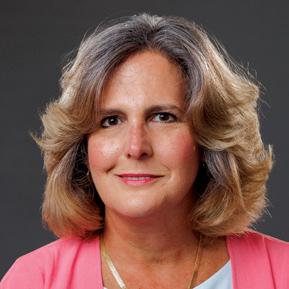
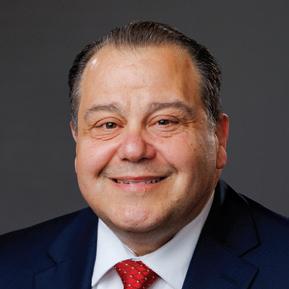

SECRETARY PRESIDENT-ELECT PRESIDENT
JUNE M. TOTH, CPA, CFF, CITP, CGMA
WilkinGuttenplan

RALPH J. EVANGELISTA, CPA, CGMA, MST
Frazer, Evangelista, Sahni & Company

JOHN M. SZCZOMAK, CPA
Smolin, Lupin & Co.

EDWARD G. O’CONNELL, CPA, CGMA, CFF, CFE Withum
KATHERINE E. ZECH, CPA PKF O’Connor Davies
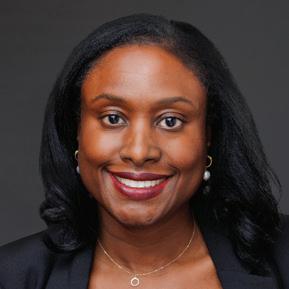
To learn more about our Executive Committee, visit njcpa.org/about/board. CEO & EXECUTIVE DIRECTOR
AIYSHA (AJ) JOHNSON, MA, IOM NJCPA
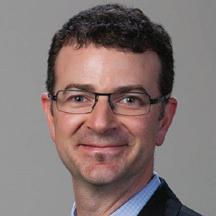
BRENT M. ASHTON, CPA
Ernst & Young
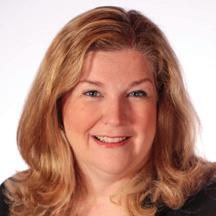
KATHLEEN BERNARD, CPA
Lota & Bernard
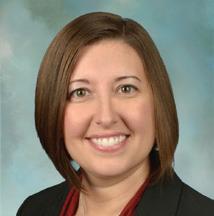
AMY MacFADYEN, CPA
EisnerAmper

GARY S. MANNUZZA JR., CPA
The Koenig Group

CATHERINE
SYSLO, CPA
CohnReznick


MICHELE THEUERKAUF, CPA
Michele Theuerkauf, CPA LLC
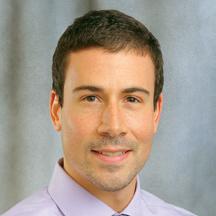
ZACHARY B. COHEN, CPA
CFGI

NICOLE M. DeROSA, CPA, MAcc
Wiss & Company

CHRIS J. SCHIFFER, CPA, CFP, MBA, AIF
Wealth Enhancement Group

DR. SEAN D. STEIN SMITH, CPA, CFE, CGMA, CMA, DBA
Lehman College (CUNY)
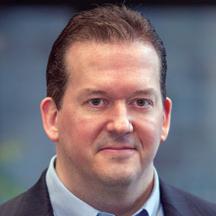
ROBERT J. VALAS, CPA/ABV, CVA, CFE
Cullari Callico
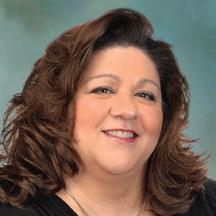
PAULA M. YOUNG, CPA
EisnerAmper

ATLANTIC/CAPE MAY
Barry R. Palatnik, Ed.D., MBA, CPA
Stockton University
BERGEN
Catherine Powers, CPA, PSA
Cullari Callico
ESSEX
Brian King, CPA
HUDSON
Kevin J. Franchetta, CPA
Montgomery Academy
MERCER
Matthew J. Walsh, CPA
Withum
MIDDLESEX/SOMERSET
Vikram Venkataramani, CPA, PFS, CGMA, CITP
VVV CPA PC
MONMOUTH/OCEAN
Peter W. Talbot, CPA
CohnReznick
MORRIS/SUSSEX
Christopher L. Martin, CPA, CGMA
CliftonLarsonAllen
PASSAIC COUNTY
Norman M. Fleischer, CPA
Norman M. Fleischer, CPA, LLC
SOUTHWEST JERSEY
Mary L. Lynch, CPA, CFE
Haefele, Flanagan & Co.
UNION COUNTY
James L. Massarelli, CPA
The Koenig Group
Learn more about our chapter presidents and the activities taking place in their chapters at njcpa.org/chapters
Accounting & Auditing Standards Interest Group
Jay L. Levine, CPA
Prager Metis CPAs
Audit Committee
Laura M. Crowley, CPA, MBA
Citrin Cooperman & Company
Business & Industry Professionals
Interest Group
Michael A. Stillitano, CPA
Stillitano Consulting
Cannabis Interest Group
Todd W. Polyniak, CPA
SAX
Chapter Operations Committee
Amber Papp, CPA, MBA Scentbird
Committee Operations Committee
Jennifer R. Peoples, CPA Jennifer Peoples CPA
Education Foundation Executive Committee
Stephen J. Mazur, CPA, CGMA, MBA
Mazur & Associates, CPAs and Business Advisors
Emerging Leaders Council and Emerging Leaders Interest Group
Joseph F. Hunt, CPA, PSA
CliftonLarsonAllen
Emerging Technologies Interest Group
Karolis Matulis, CPA, CITP, CVA WilkinGuttenplan
Federal Taxation
Interest Group
Darren W. M. Thomas, CPA, J.D., EA
Traphagen CPAs & Wealth Advisors
Finance Committee
Ralph J. Evangelista, CPA, CGMA, MST
Frazer, Evangelista, Sahni & Company
Governmental Accounting & Auditing Interest Group
David McNally, CPA, RMA
Holt McNally & Associates
Investment Committee
Craig Dalinsky, CPA, CGMA
SS&C Technologies
NJ-CPA-PAC
Paula G. Ferreira, CPA Mazars
NJCPA Scholarship Fund
Angela Garofalo, CPA, CFP
Citrin Cooperman & Company
Nominating Committee
Kathleen F. Powers, CPA, CGMA
Chelsea Senior Living
Nonprofit Interest Group
Scott A. Brown, CPA, CGMA
PKF O’Connor Davies
Peer Review Executive Committee
Michael M. Wolansky Sr., CPA
Weaver & Tidwell
Professional Conduct Committee
Charles A. Lota, CPA
Lota & Bernard
Retirement Savings Plan Committee
June M. Toth, CPA, CFF, CITP, CGMA WilkinGuttenplan
State Taxation Interest Group
Bridget McCann, CPA
Grant Thornton
Strategic Planning Committee
Maryann Holloway, CPA, RMA, PSA, CMFO Bowman & Company
Student Programs & Scholarships Committee
Larissa Hoffmann, CPA Deloitte
Volunteer Relations Committee
Jesse M. Herschbein, CPA, CGMA
Ascend Accounting Advisory
Learn more and join interest groups at njcpa.org/ groups.

Fractional CMO & Outsourced
Marketing Advisory Services: Take your marketing & lead generation initiatives to the next level with our experienced marketing professionals! Cost-effective and turnkey solution to customized strategic marketing, lead generation, and growth plans, niche development, pipeline tracking, websites, social media management, digital and email campaigns, branding, marketing retreats and more. Contact Nancy Damato, nancy@accountantsadvisory. com or call 917-921-6768 and visit www.accountantsadvisory.com
Seize a merger/acquisition opportunity with benefits for you. We are looking for firms ranging from $300,000 to $5,000,000 eager to combine forces as we continue to grow across northern NJ, Westchester and the Hudson Valley region. Goldstein Lieberman & Company is ideally situated to service all types of industries. Visit www.glcpas.com; email me, Phillip Goldstein, CPA, Managing Partner, philg@glcpas.com; or call me at 800-839-5767 to have a confidential conversation.
NJCPA members could save an average of $540* on car insurance. That includes your exclusive 15%** member discount.
To find out how much you can save on auto insurance and get access to our exclusive services and benefits, call 888-391-7220 or go to plymouthrock.com/NJCPA . Get Plymouth Rocked!

The 2024 NJCPA Convention & Expo, taking place June 11-14 at the Borgata in Atlantic City, will bring together leaders from accounting firms, industry, academia and government to share their stories of success and innovation. The following exhibitors will be on hand to inform and engage with attendees:
ABACUS PAYROLL ADP
ADVANCED COMPUTER TECHNOLOGIES
AFFINITY FEDERAL CREDIT UNION ALLIANTGROUP
AVANTAX
BAHWAN CYBERTEK
BANK OF AMERICA
BANKUNITED
BERNSTEIN PRIVATE WEALTH
BLUE J
BOOKMINDERS
C&S CONSULTING GROUP
CAMICO AND GALLAGHER AFFINITY
CAPITAL ONE BANK
CAPRI BOOKKEEPING SOLUTIONS
CAPSTAN TAX STRATEGIES
CITIZENS
COLUMBIA BANK
CONNECTONE BANK
CONSOLIDATED HUMAN RESOURCES
CORPCO
COST RECOVERY SOLUTIONS
CSI GROUP LLP
DELTA DENTAL OF NEW JERSEY
DRAKE SOFTWARE
ENGINEERED TAX SERVICES

FIRST BANK
FOURZERONINE SOLUTIONS, INC.
GUARANTEED
RATE-MARC DEMETRIOU
GUIDED PROFESSIONAL SOLUTIONS
ION BANK
ISOLVED
JPMORGAN CHASE & CO.
KBKG
KEARNY BANK
KENN HEASLIP SEMINARS LLC
LIBERTY PAYROLL AND HR
M&T BANK
MANDELBAUM BARRETT PC
MERCHANT ADVOCATE
MILES TALENT HUB
MURPHY BUSINESS SALES
NETWOLF CYBER
NEW JERSEY CHAMBER OF COMMERCE
NORTHFIELD BANK
NPPG
OCEANFIRST BANK
PAYCHEX
PAYROLL FUNDING COMPANY
PEAPACK PRIVATE, A DIVISION OF PEAPACK-GLADSTONE
PLYMOUTH ROCK
PNC BANK
POINT VANTAGE BENEFITS
PREFERRED PENSION PLANNING CORPORATION
PROTEXITY
PROVIDENT BANK PURSUIT
RAMAPO COLLEGE OF NEW JERSEY
RENEE'S BOOKKEEPING
RIDER UNIVERSITY
ROBERT HALF
ROI-NJ
ROKFI LLC
SOURCE ADVISORS
SPENCER SAVINGS
SUSSAN GREENWALD & WESLER
TD BANK
THE LACKNER GROUP, INC.
THINK WEALTH
USI AFFINITY NJCPA INSURANCE PROGRAM
VISION33
WHITMAN TRANSITION ADVISORS LLC
WILMINGTON TRUST
WOLTERS KLUWER TAX & ACCOUNTING
WORKPLACE HUMAN CAPITAL MANAGEMENT
ZEALOGICS





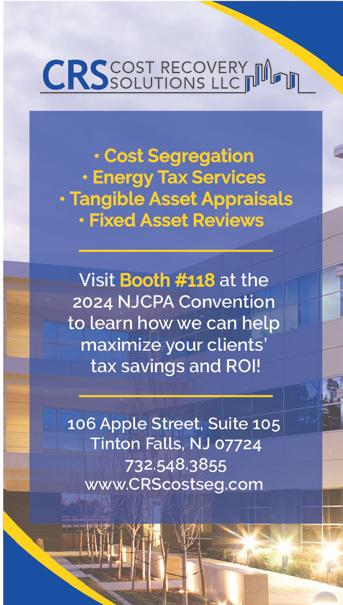
The generous support of the following sponsors enables the NJCPA to offer a low registration fee for 20-plus CPE credits:
ADP (premier sponsor) BANK OF AMERICA
& CO. LLP

LLP
GUARANTEED RATE
HARRY KRYSTALLA, CPA, LLC
JPMORGAN CHASE & CO.
M&T BANK WILMINGTON TRUST
MANDELBAUM BARRETT PC
MILES TALENT HUB
PAYCHEX
PROTEXITY
PROVIDENT BANK ROI-NJ.COM
SMOLIN
TRAPHAGEN CPAs & WEALTH ADVISORS
WHITMAN TRANSITION ADVISORS



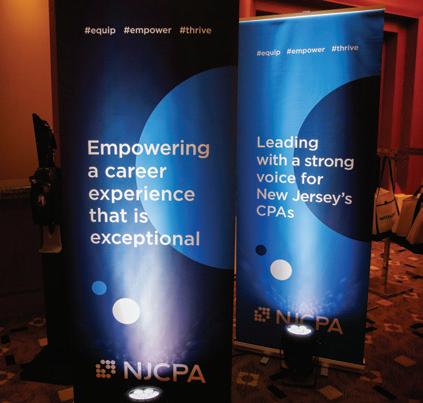


The NJCPA Scholarship Fund awarded more than $168,000 in scholarships to New Jersey high school and college students at the Society’s 64th Annual Scholarship Awards Ceremony on April 25 at the Pines Manor in Edison. Out of a pool of more than 180 applicants, 13 high school students received $1,500 scholarships and 25 college students received scholarships ranging from $2,000 to $6,500.
The Deloitte Foundation funded scholarships for five high school and college students for the third year. These awards are distributed to graduating seniors from specific high schools in New Jersey whose student populations are racially or ethnically diverse who have been admitted to college and are pursuing accounting degrees as well as students who are already in college pursuing accounting pathways. This year’s participating high schools were Dwight Morrow High School (two winners) and Hudson County School of Technology, while the colleges were Kean University and Montclair State.
“It is a pleasure to be distributing these scholarships to such worthy students. The awards are a reminder of how important it is to support our youth and the next generation of accounting professionals,” said Angela Garofalo, CPA, CFP®, the new president of the NJCPA Scholarship Fund and a partner at Citrin Cooperman. “Many
scholarship winners have gone on to accomplish great things in our profession.”
The college awards also included minority scholarships given in conjunction with the American Institute of CPAs (AICPA) and the National Association of Black Accountants (NABA) – Northern New Jersey Chapter.
Special thanks go to the following firm/ company benefactors:
y Citrin Cooperman (two awards)
y CohnReznick
y Deloitte Foundation
y EisnerAmper
y Frazer, Evangelista, Sahni & Co.
y Holman Frenia Allison
y Mazars USA
y Smolin, Lupin & Co.
y WilkinGuttenplan
y WithumSmith+Brown
This year’s in-name-of awards included the following:
y Bowman & Company in memory of John F. Dailey Jr.
y Bowman & Company in memory of Lisa Donahue
y In Honor of NJCPA Past President Brad Muniz
y In Honor of NJCPA Past President Frank Boutillette

y In Honor of NJCPA Past President Michael A. Polito
y In Honor of Ralph Albert Thomas, former NJCPA CEO & Executive Director
y In Memory of Frederick and Lenore Horn (two awards)
y In Memory of NJCPA Past President John F. Dailey Jr.
y NJCPA Council of Past Presidents
y WilkinGuttenplan in memory of Jules C. Frankel
All scholarships took academic grades, standardized test scores (if taken), essays and personal interviews into account.
Eighty NJCPA members assisted with reading essays and conducting interviews during the selection process.
A complete list of winners can be found at njcpa.org/scholarships.



NJCPA members fielded more than 150 calls from New Jersey residents during the NJCPA tax call-in programs in March. Volunteers accepted calls during a program with the Asbury Park Press on March 3 and at News 12 New Jersey on March 30.
With questions ranging from Social Security to rental properties to medical expenses, the events provided an opportunity for NJCPA members to offer free tax help to many people who do not have access to CPAs. This year’s questions focused on exclusion of gains on sales of primary residences and home-related questions; publicly traded securities, mutual funds and capital gains; deductible medical expenses, including both federal and New Jersey limitations; the differences on a state and federal level for 401(k), IRA and Roth IRA plans; and tuition credits.
Olga Lubomirsky, CPA, MST, a volunteer at the Asbury Park Press event and a senior tax manager in the Private Client Services group at Mazars USA LLP, said, “The positive feedback from callers has been truly heartwarming. Being able to offer support to taxpayers who may not have access to professional assistance brings me great satisfaction and purpose.” She added, “This program is deeply rewarding for both callers and volunteers alike!”


The following NJCPA members participated in the programs:
y Neil B. Becourtney, CPA
Smolin Lupin & Co.
y Ryan Brandt, CPA
Withum
y Melanie Cobb, CPA, CGMA
Abacus Financial
y Nicole DeRosa, CPA, MAcc
Wiss
y Robert A. Fodera, CPA
Baker Tilley (retired)
y Olga Lubomirsky, CPA, MST
Mazars

y Stephen J. Mazur, CPA, CGMA, MBA
Mazur & Associates, CPAs and Business Advisors
y Laurie Smith, CPA
Wiss
y June M. Toth, CPA, CFF, CITP, CGMA
WilkinGuttenplan
y Danielle Weiss, CPA
Smolin, Lupin & Co.
Members who would like to be considered for future tax Q&A sessions should sign up at njcpa.org/volunteer
Continued from page 25
Matthews, Panariello P.C., a full service Bergen County firm located in Paramus, is looking to merge or acquire firms, sole practitioners, or accounts (audits, reviews, compilations and tax preparation and compliance services). We are a peer reviewed firm with a strong track record of client retention. We have been successful in prior acquisitions; let's talk. Visit our website at www.mpcpas.com. To confidentially discuss email Peter at pmanetta@ mpcpas.com.
Selling your CPA firm is complex.
We can make it simple. Accounting Biz Brokers has offered quality business brokerage services to CPAs for over 19 years. We work with industry specific lenders to assist buyers with obtaining financing. Visit www.accountingbizbrokers.com to view our available listings. Contact Kathy Brents, CPA, CBI at 501-514-4928 today to start the confidential sales process.
Traphagen CPAs & Wealth Advisors, a well-established firm in Bergen County with diverse client base and credentialed support staff is seeking small firms and sole practitioners for acquisition or merger. We are looking for firms ranging in size from $300K to $700K. This is an opportunity to align with a quality peer- reviewed firm, while continuing to provide your clients with exceptional service. To confidentially discuss this opportunity, please email us at carolynn@tfgllc.com
Union County CPA selling well-established practice specializing in individual returns, corporate partnerships, tax based financial statements and general accounting. E-mail 07083cpa@gmail.com
We represent highly reputable clients that are actively seeking strategic transactions through traditional merger and acquisition structures, traditional Private Equity transactions, and hybrid structures (combination of traditional M&A and PE). Our clients are experienced in M&A and PE and have proven histories of successful deals. We successfully closed two transactions this year with NJ firms. Please contact Joe Tarasco at joe@ accountantsadvisory.com or call 845-265-9046 or cell: 914-924-1450.
New Jersey Practices for Sale: Gross revenues shown: New $1.236M Eastern Bergen Co, NJ CPA; New $2.107M Morris Co, NJ Partnership Interest; $228K Edison, NJ Tax Practice; $165K Warren Co, NJ CPA; $790K Union Co, NJ CPA (with Warren Co office); $700k Southeast Passaic Co, NJ CPA; Available After April 15th $700K Somerset/Hunterdon Co, NJ CPA; for more information, call 800-397-0249 or visit www.aps.net.
Retirement-minded sole proprietor with bookkeeping practice grossing $100k + annually is looking for a growth minded individual or firm. Long-term, loyal client base with steady monthly billings and potential to expand services provided. The work is 100% remote using QuickBooks Online. Contact me via email lisa@ keenaccounting.com
Quality Review for CPA firms: Audit, Review, Compilation, Employee Benefit Plans, Yellow Book, Revenue Recognition, Leases. Contact James M. Sausmer, CPA at 732-261-7710 or james. sausmer@gmail.com
To see additional classified listings or to place an ad, visit njcpa.org/classifieds
CAMICO camico.com
CAPSTAN capstantax.com
CONSOLIDATED HUMAN RESOURCES chrusa.com
COST RECOVERY SOLUTIONS crscostseg.com
CPACHARGE cpacharge.com/NJCPA
GALLAGHER AFFINITY gallagher-affinity.com
PEAPACK PRIVATE, A DIVISION OF PEAPACK-GLADSTONE pgbank.com
PLYMOUTH ROCK ASSURANCE plymouthrock.com/ NJCPA

One could say it was in Christine Fabbro Brunner’s blood to obtain her CPA. Growing up in Edison in a family of doctors, lawyers and CPAs, she was used to people working towards advanced degrees and licenses. So, when Christine found the opportunity to obtain her CPA when she was already a mother of twins and working for more than 20 years, she took it.
Being raised Italian, her family had a big influence over her. Her father was a doctor, and her uncle was a CPA who had his own practice. “I was introduced to being a CPA by my uncle. That was always in the background,” she says. She was also influenced by her relatives’ career transformations. Her father was originally a chemical engineer and then put himself through medical school, while her aunt was a teacher who went back to get her law degree. “That transformation has always been part of my family,” she notes.
Given those influences, it’s no surprise that Christine, who obtained her CPA in 2022, also received her Certified Fraud Examiner (CFE) credential and her Master of Accountancy (MAcc) degree.
Christine graduated from Seton Hall University with a B.S. in accounting. “I’ve always loved math and science and was very interested in math,” she explains. She found taking the CPA Exam in New York daunting since it required taking all four parts at the same time, so she opted instead to work in Manhattan and do investment accounting for hedge funds. She worked in asset management for CIT Group in Livingston and eventually Ziff Brothers, a multi-billion-dollar family investment firm in New York, for 16 years.
After marrying her husband, Daniel, who was with the FBI in New Jersey
and has since retired, Christine left the workforce to raise her children. When they eventually went to school, she decided to obtain her MAcc online from Rider University with a concentration in forensic accounting. Still in the test-taking mode, she studied for, and passed, the CPA Exam. “In order to be able to testify in forensic accounting, you need to have your CPA,” she says.
And, since her husband was studying for his M.A. in International Security Studies at the University of Arizona at the same time, it made it easier in their family life. According to Christine, “The study plan worked because Daniel was also studying at night. We would put the twins, Hunter and Harper, now 7 years old, to bed and then study. That’s how we were able to do it.”
When her children were older, she reentered the workforce, doing consulting at firms like Bederson LLP, where she handled forensic accounting, litigation support and tax controversy. Eventually Christine and Daniel realized their skillsets would be a perfect match for a forensic accounting and security firm, so they co-founded Brunner Sierra Group (BSG) in 2022.
Since they are also avid skiers, they opted to raise their children as well as set up shop in Montana. They are now able to service clients in both Montana and New Jersey.
Christine, now CEO of BSG, also attributes her career success to strong female support. “A lot of my jobs have been with wonderful women who have really helped me get ahead in my career as a woman. That was very instrumental to me,” she says. At Ziff Brothers, in particular, there were many female leaders heading up tax, legal and finance departments at that time.
Women also supported her in studying for the CPA Exam, with her family plans and in co-founding her business. For those who know Christine, most would argue if anyone was going to pull off an active family life with twins and a strong professional career, it was going to be her.
CPACharge has made it easy and inexpensive to accept payments via credit card. I’m getting paid faster, and clients are able to pay their bills with no hassles.
Trusted by more than 150,000 professionals, CPACharge is a simple, web-based solution that allows you to securely accept client credit and eCheck payments from anywhere. – Cantor Forensic Accounting, PLLC

22% increase in cash flow with online payments
65% of consumers prefer to pay electronically
62% of bills sent online are paid in 24 hours


Get started with CPACharge today
